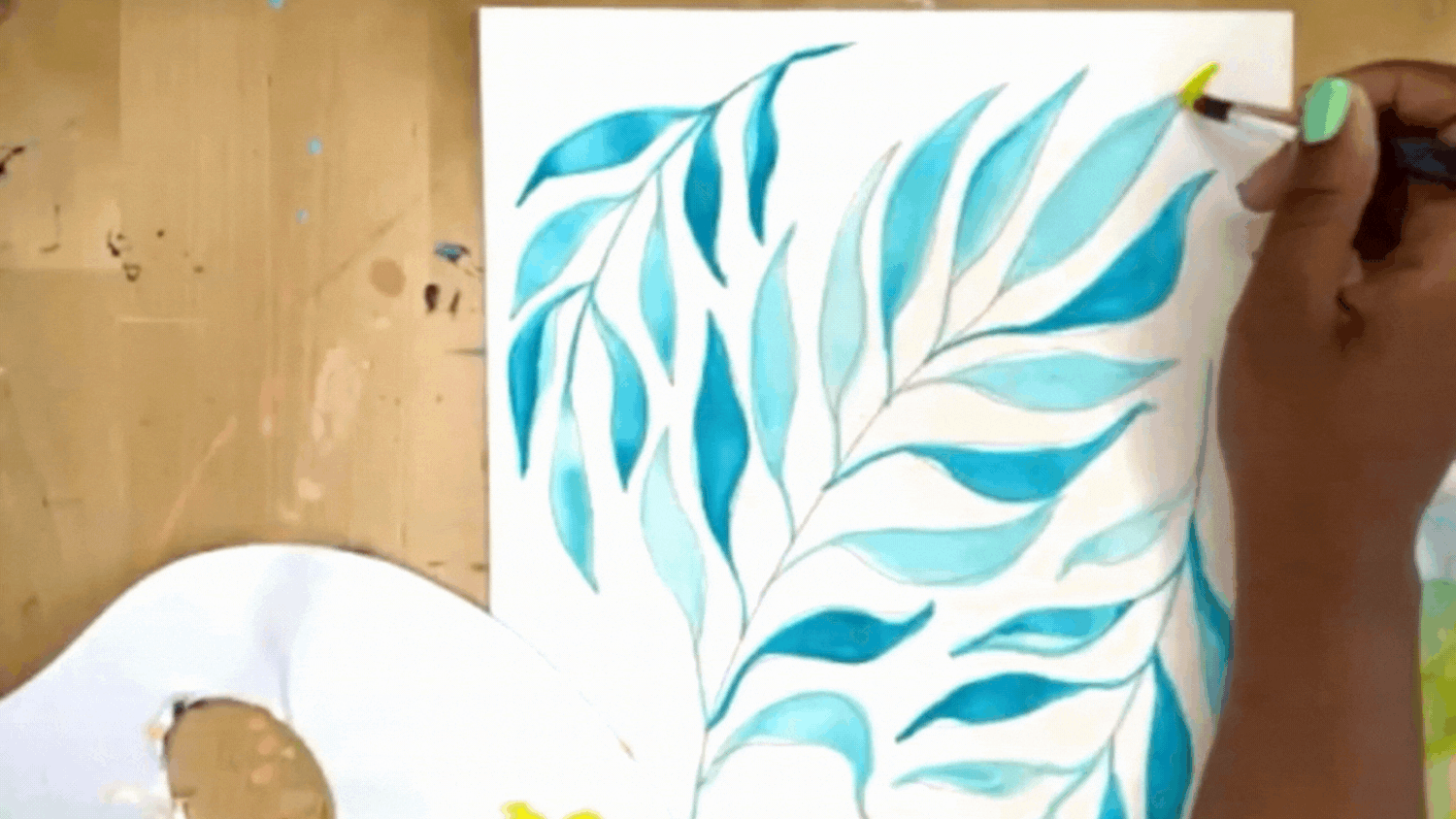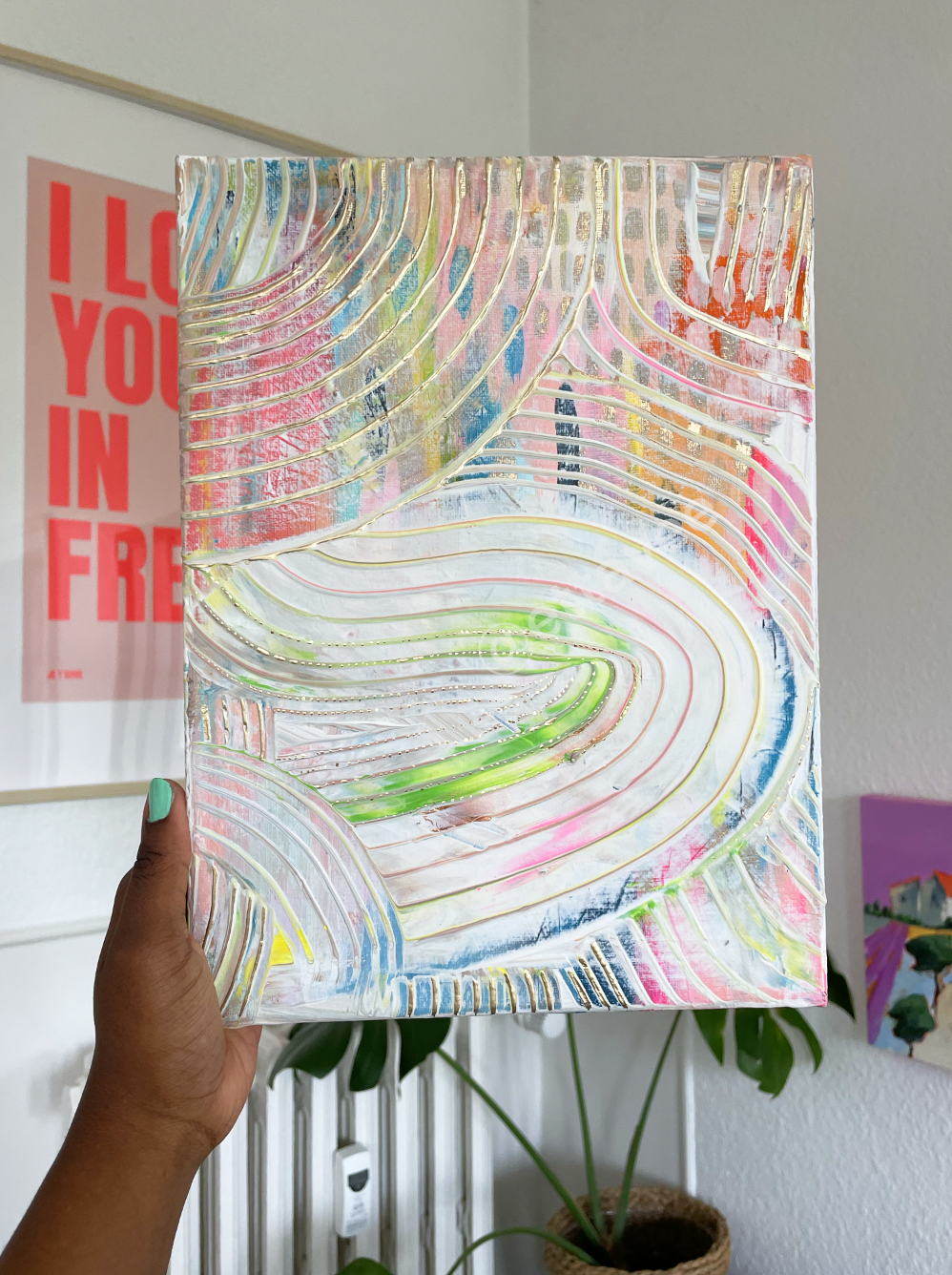How to Make Paint Dry Faster
Ever heard the phrase “like watching paint dry”? As an artist, I know how disruptive it can be to your creative flow when a particular layer is taking a long time to dry. In this article, I’ll share a few quick tips to help your paint dry faster!
I’m an abstract artist and I work almost exclusively with acrylic paint when I’m painting large-scale works. This tutorial will primarily focus on drying strategies for acrylic paint.
The Beauty of Quick-Drying Acrylic Paint
The reason that I prefer working with acrylic paint is that it dries really quickly compared to other mediums like oil. Simply put, acrylic paint works at the speed that my brain does.
I’m an abstract artist and intuitive painter, and using acrylic paints allows me to easily flow through my painting process without any unwanted color blending happening on my canvas. Painting in layers is hugely important for the kind of work I do, and with acrylic paint, I’m able to move quickly from layer to layer.
Acrylics are still flexible enough to get some beautiful blends, but you just need to work faster than you would with oil paint. If you’re frustrated with the speed at which your paint dries, try playing with acrylics and see how you like them!
Paint Thinner Layers
Even though acrylic paints dry quickly there are still a few instances where it might take a while to dry. Expect longer drying times if you’re using goopy textured brushstrokes or painting with a lot of water.
One easy way to fix this is to paint thinner layers! Try loading less paint onto your brush and painting it in a thin, even layer. If you find that using less paint makes it harder for your brushstroke to flow, add a tiny bit of water to help it move more freely.
You’ll be amazed at how quickly these thin layers can dry!
Use a Hairdryer
My not-so-secret weapon for drying my pieces is a hairdryer! This is going to be your new best friend if you want your acrylic paint to dry faster. I often use mine between layers so that I’m able to move on more quickly.
It can also be a huge help when painting a texture-ific piece like this one.
One thing to note is that you should hold your hair dryer at a distance from your canvas. You don’t want to heat the paint up too much or have the air blowing so hard that the paint moves on your canvas.
Acrylic paint is plastic-based, so too much heat can cause it to melt and bubble. And if your paint is extremely wet, having too much air close to the canvas might cause the paint to travel in ways you didn’t intend.
I hope these tips were helpful and that you’re able to use them to get into a creative flow! If you want more inspiration for finding your flow, check out this blog post about tapping into a sense of creative play!
xo, Jessi
Want more abstract painting instruction? Join me in my abstract painting class, Joyful Abstracts, for an in-depth art class where I walk through my entire abstract painting process from start to finish. You’ll learn how to gather inspiration, how to sketch out your composition, what colors to choose, how to paint a balanced abstract, and how to varnish your painting so it will last a lifetime!
Pin this post for later! 📌
Hover or tap on this image and click the “Save” button on the top left!





